Table of contents
What are Nordic Runes?
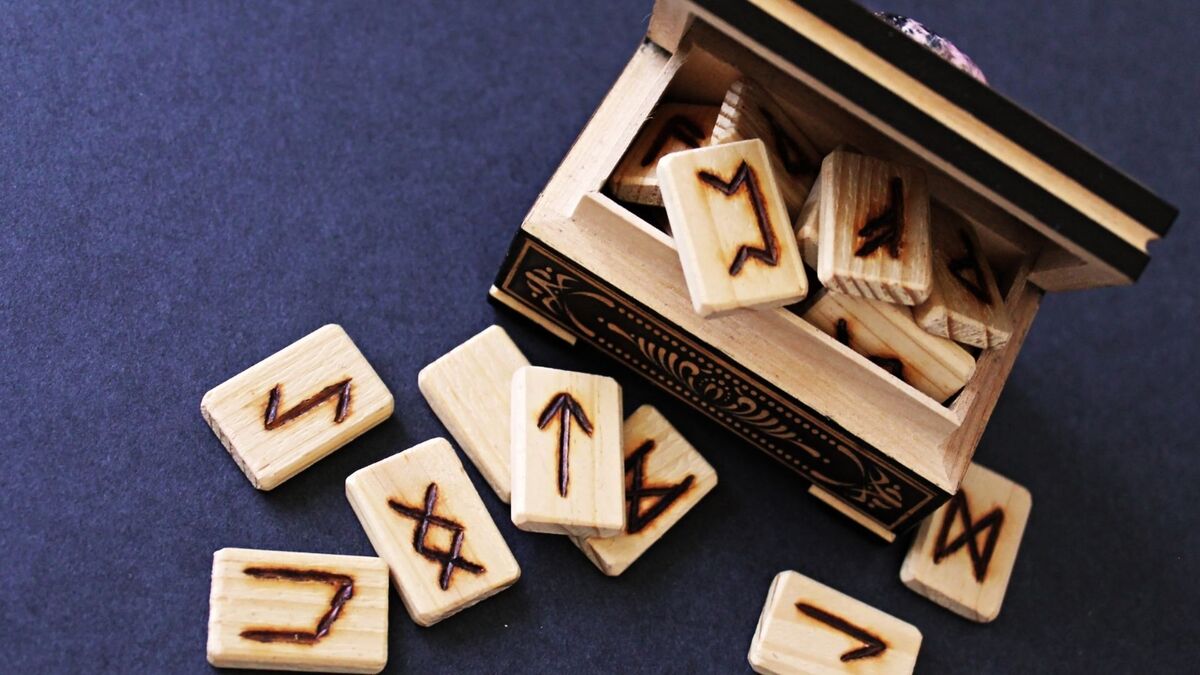
The Nordic Runes are an alphabetical system used by the Germanic peoples. Initially, each letter was used to record the language of these peoples, but this system has been used popularly in recent decades as a method of divination.
The alphabet used by the Germanic people, is given the name of Futhark, due to the initial letters of the names of the first runes: Fehu, Uruz, Thurisaz, Ansuz, Raido and Kennaz. The runic alphabet has variations, each one of them depending on the region or historical moment in which it was used.
As a divinatory instrument, it is common to use a system of 24 runes plus a white rune, recently included with the esoteric movements. Besides serving as an alphabet and oracle, the runes are also instruments of magic that refer to the myth of the Father of All, Odin.
In this article, we will present a brief introduction to Norse mythology and the origins of the runes. We also include their meanings so that you can use them as a powerful divinatory method.
The history of the Nordic Runes
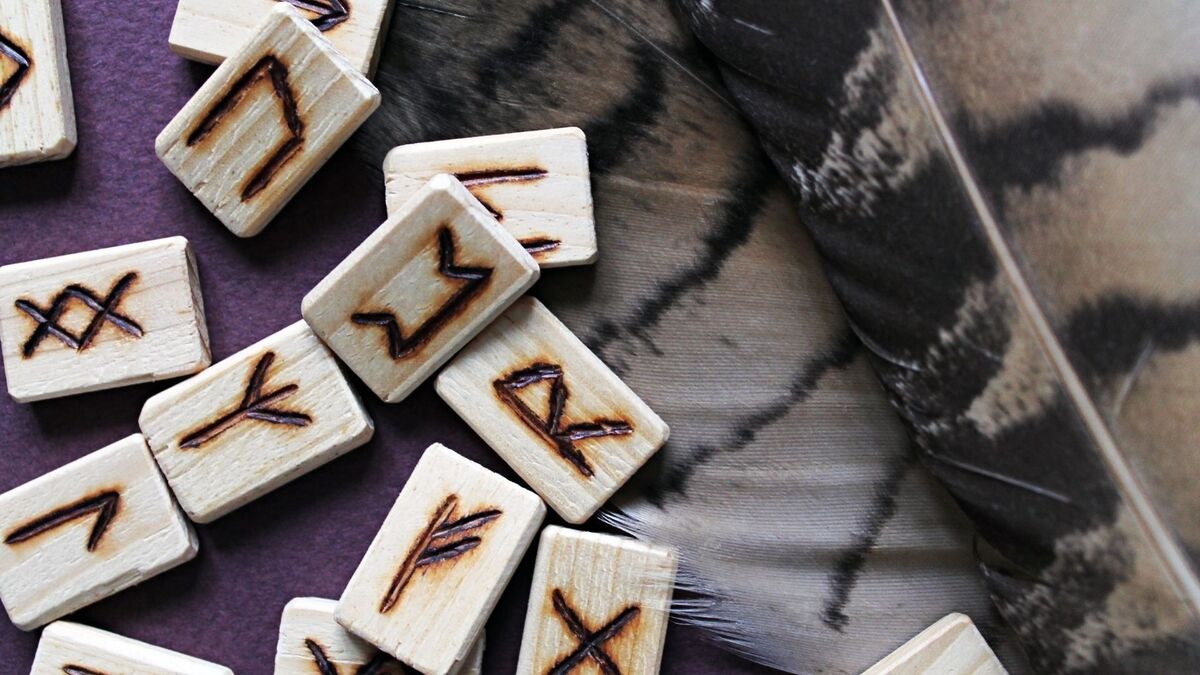
The name runes means mystery or secret and its history has two major strands: scientific and mythological. According to the mythological view, the secrets of the runes involve the myth of Odin's sacrifice in the tree of life, Yggdrasil. Read on to learn more about Norse cosmology.
Viking Cosmology
According to the Edda in Prose, in the beginning of everything there was a place of fire called Muspellheim, and another place with mist called Niflheim. In Niflheim there was a spring, Hvergelmir, from which flowed many rivers that became ice due to a substance in them.
This substance evaporated and became frozen dew and the layers of ice solidified and became a void called Ginnungagap. Thus, the ice came into contact with fire and created Ymir, a giant, from which emerged a couple of giants, who begot children.
Ymir fed on the river of milk from the teats of the cow Audhumbla who, by licking the salt on the frozen dew, released Búri, the first human. Búri married a giantess and begot Odin, Vili and Vé, who created the earth, the heavens and the oceans with Ymir's body at the center of Ginunngagap.
Yggdrasil: The Universe is a tree
Yggdrasil an ash tree, whose branches stretch to the heavens and hold various realms, which represent the universe or even the multiverse. Around Yggdrasil there are various creatures that inhabit its trunk, among them an eagle, a dragon and deer.
Yggdrasil is supported on three roots: Urdarbrunnr, a well in the heavens; Hvergelmir, a fountain; and Mímisbrunnr, another well. Yggdrasil has 9 realms attested in the Poetic Edda and Prose Edda:
1) Asgard: kingdom of the Aesir;
2) Alfheim: kingdom of the elves;
3) Hel: realm of the dead by disease or age;
4) Jötunheim: kingdom of the giants;
5) Midgard: realm of humans;
6) Muspelheim: kingdom of fire;
7) Nivadavellir / Svartalfheim: kingdom of the dark elves;
8) Niflheim: realm of snow, mist and ice;
9) Vanaheim: kingdom of the Vanir.
Two races of gods
In Norse mythology there were two races of gods: the Vanir and the Aesir. The Vanir are considered a lineage of gods related to fertility and the Aesir, gods related to the heavens.
These two races of gods generated a mythological episode called the War of the Aesir and the Vanir, which resulted in the unification of the Aesir and the Vanir into a single pantheon. Among the Vanir are the gods Frey, Njörd and the Goddess Freya, while the Aesir include Odin, Thor, Frigga and Baldr.
The Runes: The Divine Connection Code
The 24 runes of Futhark are not only an alphabet, but also a code of divine connection. Through them, you have access to three distinct dimensions: sound, an image and a concept, linked to the spiritual, physical and mental planes respectively.
The sound is linked to its phonetic value, through which we can chant to connect with the divine through the essence of this rune. The image will help you anchor the concept, linked to the mental plane, on the physical plane. Therefore, it is a powerful and effective code to connect with the divine.
The runic alphabet
The runic alphabet is composed of 24 letters that were used by the Germanic peoples before they adopted the Latin alphabet that they use until today. Each rune has a sound value, but they are also named through concepts that each letter represents.
The Scandinavian variants of the runes are known as Futhark, containing the initials of the first six letters of the alphabet, while the Anglo-Saxon version of the runic alphabet is called Futhorc. At present, the Futhark runes are more widespread for divinatory use, but there are two versions of it: the Old Futhark and the New Futhark, the former being the most widely used.
Meaning of the White Rune
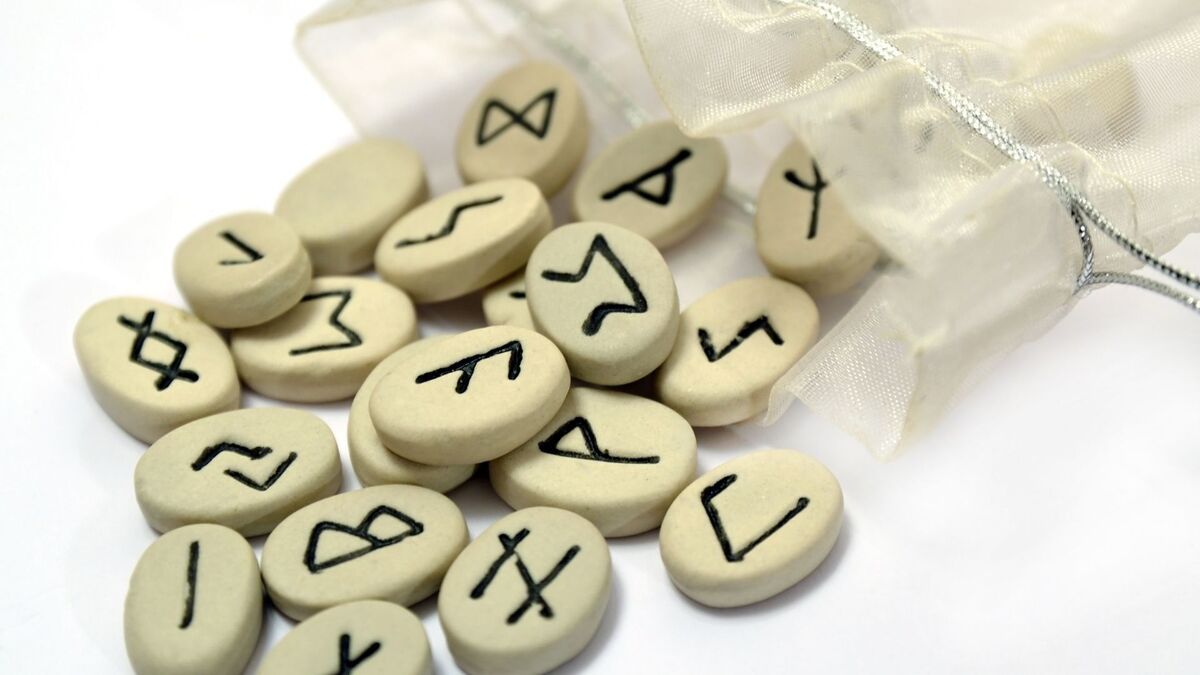
The white rune is an undrawn and optional rune, included in Futhark only for divinatory purposes, probably by Ralph Blum in 1983. It represents the secrets of Odin that must be retained. Read on to understand its relationship to Odin and its meanings in love, work, and its negative side.
The Rune of Odin
The Odin rune is an alternate name for the white rune found in some rune sets for sale. It is also called the rune of the Wyrd. It signifies the secrets of the God Father of All and lord of the runes, Odin, that must be kept safe.
When she appears, she reminds us that there is part of the destiny that needs to be guarded and that the consulter may not have the answers to all his questions yet. As a consequence, she represents uncertainty, ambiguity, unknown outcome and secrets.
It can also be interpreted as emptiness, silence and infinite possibility. Therefore, it is the sense of ambiguity, since it can represent either the darkness of ignorance or the light of knowledge.
The White Rune for Love
The White Rune in love means uncertainty. It can indicate a tense period, which can generate anxiety, fear and bad feelings like jealousy.
However, even with bad feelings, the outcome is uncertain: there are equal chances of having a good outcome, or a bad outcome. Odin carries all the wisdom of life and so trust him. Try to live your life intensely and be confident that whatever happens, it is for your good and is part of your destiny.
The White Rune for work
Once again, there is a secret surrounding the answer to your question. This rune requires you to have complete trust and be aware that you have reached a point in your life that is intimately connected with your mission in this lifetime. It all depends on your past actions. It indicates changes, but it is important that you avoid talking about them.
The downside
The downside of the Odin rune is uncertainty. When it arises, there are complications with your question. It may indicate that it was poorly worded or that the answer to it is still kept secret.
So it is important to wait. And that is the most negative side of this rune for most people: waiting, nowadays, generates many negative sensations like anxiety. Try to meditate on the current situation which is the subject of the question. If necessary, take another rune from your bag to understand the root of this question.
It may also indicate a symbolic death of a part of your life. But do not be afraid: remember that the answer is linked to your destiny.
Group of Necessity - Aett de Feoh
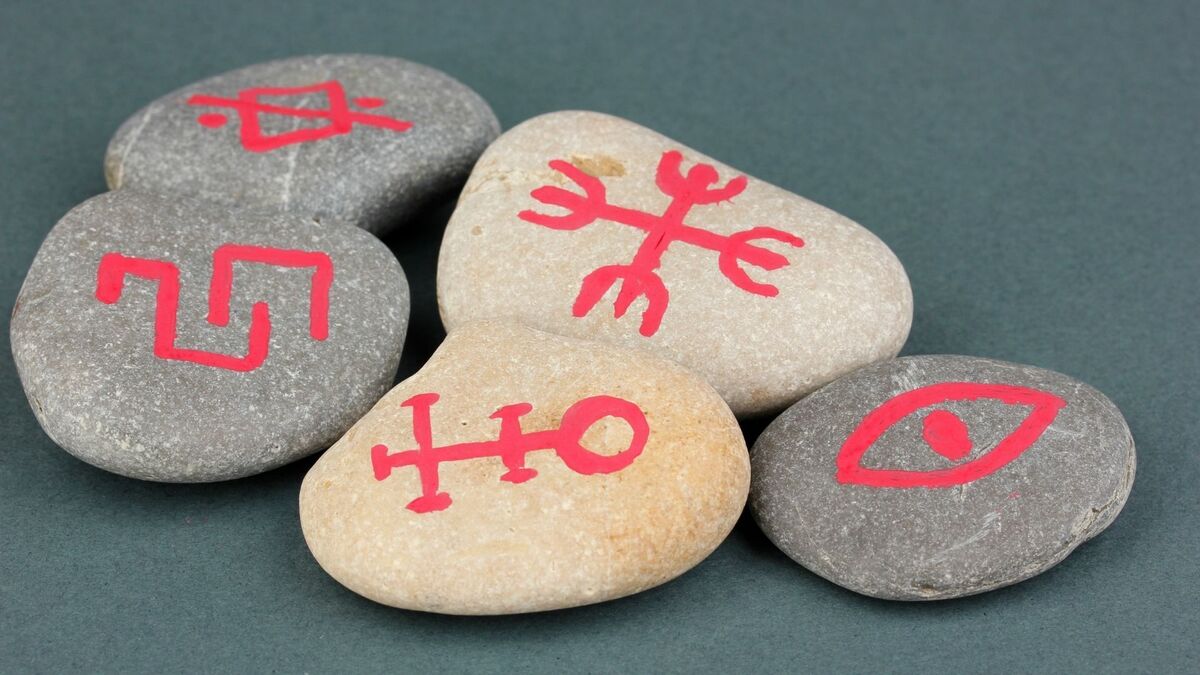
The runes are divided into groups of eight, called aettir which reflect Northern European mysticism. Each aett is named after the name of the first rune that opens the group. The first Aett is ruled by Feoh and in esotericism is considered to be the group of necessity.
Fehu or Cattle
Fehu is the first rune of the first Aett. Its meaning is cattle or wealth. Since in ancient Europe, owning cattle was a sign of property and wealth, this rune is closely linked to material possessions, especially mobile wealth. In addition, this rune embodies the basic force of fertility.
In inverted position, it indicates problems, frustrations and losses related to finances, as well as unfinished projects. The key words are abundance, creation, energy, fertility, fortune, opportunity, prosperity, wealth and luck.
Uruz or Bison
Uruz is the second rune of the first Aett. It represents the aurochs, a species of wild European cattle that is now extinct. It means strength, endurance, dedication, perseverance, motivation and hard work.
It also indicates a positive period for obtaining energy, with a prediction of good health and agility. Since aurochs were strong animals, it also indicates increased virility and power.
When inverted, its meanings are more negative, as it indicates loss of health, submission or even a blockage. The key words are courage, strength, organization, perseverance, endurance, health, vitality, vigor and virility.
Thorn or Thor
The third rune of the first Aett is Thorn, also known as Thurisaz. It represents the hammer of Thor, the god of thunder, called Mjöllnir. It means the power to direct your energies towards defense, attack or destruction, so it can indicate conflicts.
Thurisaz also possesses within it the masculine and feminine polarities, also containing the energy of life and death. Like lightning, it can indicate regeneration and fertilization. In the inverted position, it indicates vulnerability, compulsion, rancour or even betrayal. The key words are attack, conflict, defence, challenge, strength, danger, protection and regeneration.
Ansuz or Boca
Ansuz is the fourth rune of the first Aett. It is the rune that represents the mouth and therefore is closely linked to communication. It represents Odin's staff and his divine wisdom, indicating that an important message is on its way. Ansuz is also the ancestral power.
It can also mean wisdom, inspiration, advice, truth and even indicate enthusiasm. When inverted, it indicates false people, betrayal, misunderstandings, lies, communication problems and manipulation. The key words are ancestry, communication, knowledge, inspiration, message, reception, revelation, wisdom.
Rad or Wheel
Rad or Raido is the fifth rune of the first Aett. It is the cosmic law of the universe and its meaning is associated with change and travel, which can be a business trip or vacation, or even a spiritual journey in which you will learn important lessons for your life.
As it represents a wheel, it indicates life cycles, evolution and that things will make sense if looked at from a new perspective. When inverted, it means injustice, irrationality, disturbance, rupture and rigidity. The key words are action, cycles, evolution, journey, law, movement, change, perspectives, rhythm, travel.
Kenaz or Torch
Kenaz is the sixth rune of the first Aett. It symbolizes the flame or torch and therefore signals a light that will guide your path, bringing out hidden facts and with them the truth. It therefore reveals secrets and indicates that you are going in the right direction to find the truth.
As alternative meanings, Kenaz is associated with knowledge that dissipates leftovers, creativity, inspiration vitality, as well as regeneration and energy brought by the element of fire. She is also the fire that incites sex.
When it is inverted, it indicates lack of perspective in life, creative block, false hope and instability. The key words are understanding, knowledge, sexual desire, ability, idea, enlightenment, inspiration, purpose, transformation.
Gebo or The Gift
Gebo is the seventh and penultimate rune of the first Aett. It is the rune that signifies gifts and the gifts one receives. It is a good sign indicating that you possess many talents and that many blessings have been bestowed upon you.
It is also closely linked to generosity, balance and healthy relationships, as it indicates union, including sex. Gebo also indicates sacrifice. Since its shape is similar to an 'X', it does not have an inverted position. The key words are help, charity, gifts, generosity, partnership, service, luck, talents.
Wynn or Joy
Wynn or Wunjo is the eighth and final rune of the first Aett. Its meaning is associated with well-being, triumph, belonging, as well as happiness, security, stability and celebration. It is a sign of a harmonious time, with material and spiritual gains, when one can enjoy the delights of life.
When it is inverted, it signifies matters connected with emotional loss, sadness, unhappiness and alienation. The key words are well-being celebration, comfort, community, happiness, celebrations, belonging, pleasure, success.
Group of Necessity - Aett of Heimdall
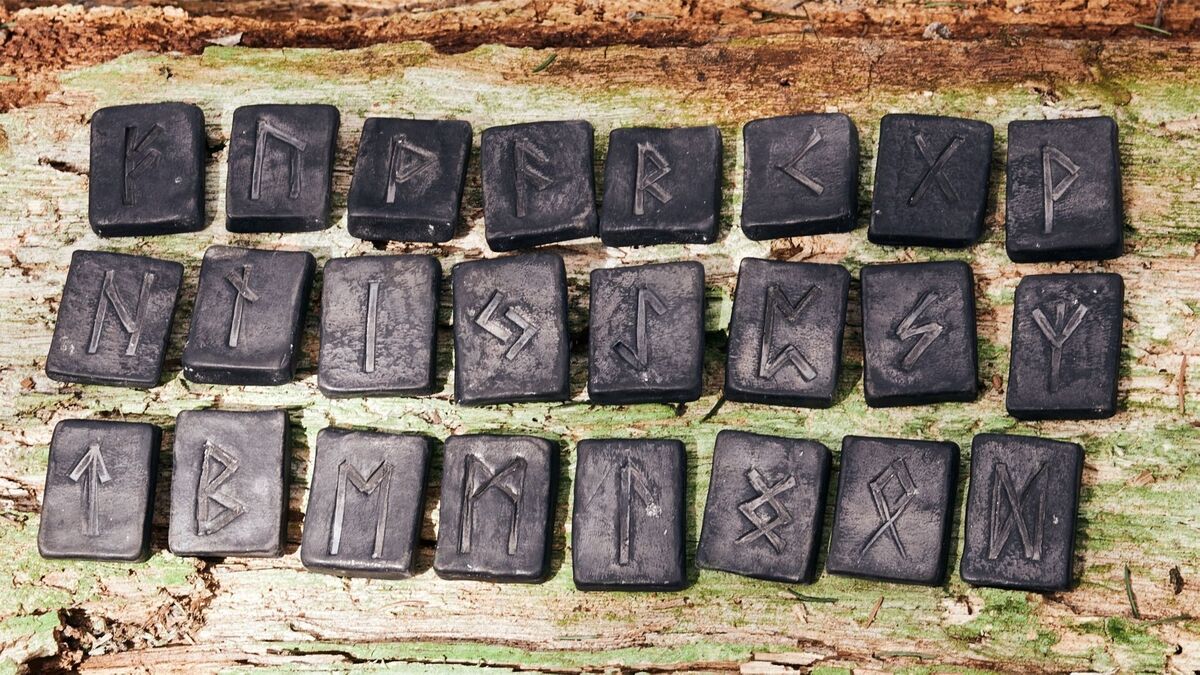
The second Aett is the Aett of Heimdall. In Norse mythology, Heimdall was the guardian of the gods, who watched over, from his abode, the Bifröst bridge, which gave access to Asgard, the home of the gods. This set of 8 runes is formed by Hagall, Nied, Is, Jera, Eoh, Peorth, Eohl and Sigel.
Hagall or Hail
Hagall or Hagalaz is the first rune of the second Aett and symbolizes hail. Like the hail that comes out of nowhere, destroying crops, this rune indicates sudden change. In the esoteric world, it is usually associated with the tarot card Tower, because it indicates an inevitable change, whose results will depend on how you face these changes.
Hagalaz indicates changes in life that are present to clear the way. Therefore, it means evolution. Due to its shape, it does not have an inverted position. The key words are destruction, uncontrollable forces, external influences, sudden change.
Nied or The Need
Nied or Nauthiz is the second rune of the second Aett. It is a rune that symbolizes need and shows that it is important to reflect on what it takes to feel full and stable in the most important areas of your life.
It can also indicate delays, restriction and resistance, which will require you to be very patient. When it is inverted, it indicates stress, exhaustion and even depression. The key words are discord, lack, need, resistance, restriction, survival.
Is or Ice
Is, also called Isa, is the third rune of the second Aett. Its name means ice. It indicates a pause. Like someone who gets stuck in ice, the time has come to stop what one is doing to better understand what is happening and then be able to act after pondering the situation through different angles.
It can also indicate frustration or emotional and psychological blockages caused by external influences. In the tarot, Isa corresponds to the Hanged Man card. Due to its shape, this rune does not have an inverted position. The key words are accumulation, delay, blockages, ego, waiting, frustration, pause, stillness, suspension.
Jera or The Harvest
Jera is the fourth rune of the second Aett. Its name means year and it represents the harvest, indicating that it is time to reap what has been planted. It may also indicate an important discovery that is about to be revealed or that it is time to give thanks for all the blessings that have been bestowed upon you.
It signifies the cycles of nature and the cyclical nature of life. Due to its shape, it cannot be reversed. The key words are abundance, year, cycle of life, harvest, completion, growth, ends, beginnings.
Eoh or The Yew
Eoh, or eihwaz, is the fifth rune of the second Aett. It symbolizes the yew, a sacred evergreen tree. The yew is a poisonous tree, and so it is linked to the energy of death.
Eoh is the giving and sustaining force of life and is related to its cycles, also representing trust, dependence, security, enlightenment and connection, as it establishes links between all worlds. Many runologists usually associate this rune with the Death card of the tarot.
In the inverted position, Eihwaz means isolation, disconnection and confusion. The key words are cycles of life, connection, sacred knowledge, inspiration, protection, endurance, security.
Peorth or Something Occult
Peorth, or Perthro, is the sixth rune of the second Aett. It is the rune of bets, chance, cause and effect, fate and luck. When it appears, it indicates that your life depends on chance, so it can either be on the way to a good thing, or it can go completely wrong. In tarot, it is related to the Wheel of Fortune.
It can also mean secrets, changes and hidden messages between the lines. In the inverted position, it indicates loss of faith, unpleasant surprises and stagnation. The key words are chance, unknown, fate, female fertility, occult, mysteries, mysticism, luck.
Eohl or The Moose
Eohl, also called Algiz, is the seventh rune of the second Aett. Its name means moose, a symbol of protection and defence. It is usually linked to the power of making dreams come true and also indicates protection from your spirit guides. It can be a sign that there will be an awakening or even that you have a strong intuition.
In the inverted position, it indicates hidden danger and enemies. Keywords are courage, defense, awakening, instincts, protection, danger.
Sigel or The Sun
Sigel, also called Sowulo, is the eighth and final rune of the second Aett. It symbolizes the sun, also representing a time of happiness, abundance, victory and good fortune. It indicates that your goals have been fulfilled, and that you are in an auspicious period, enjoying great health and energy.
Due to its shape, it has no inverted position. In the esoteric world, Sowulo is equated with the Tarot Sun card. The key words are abundance, joy, happiness, inspiration, justice, sun, success, vitality, victory.
Mankind Group - Aett of Tyr
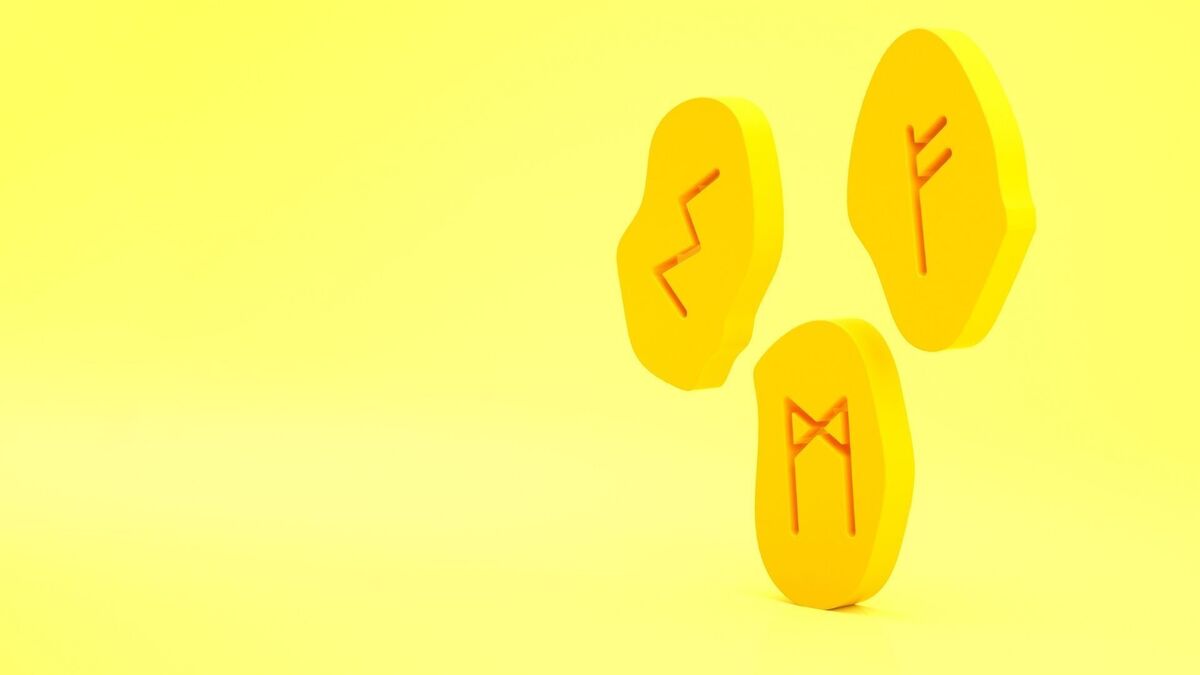
The third and last of the aettir, is the Aett of Tyr, god of justice and war. It is composed by the runes Tyr, Beorc, Eow, Mann, Lagu, Ing, Daeg and Othila.
Tyr or the god Tyr
The first rune of the third Aett is Tyr, also known as Tiwaz. As its name suggests, it symbolizes the god Tyr. It represents overcoming, leadership skills, honor, rationality, and authority. When it appears, it is an indication of victory and self-knowledge, especially related to self-sacrifice.
In the inverted position, Tiwaz indicates blockage of energies, over-analysis, coldness, demotivation and imbalance. The key words are bravery, courage, strength, honor, honor, leadership, perseverance, rationality, endurance, victory.
Beorc or Gestation
Beorc, also known as Berkana, is the second rune of the third Aett. It is the rune that indicates gestation, birth, abundance and multiplication. Its name comes from a goddess represented by a birch tree, symbol of fertility and creation.
Berkana also symbolizes physical and emotional growth, besides containing in itself regenerative powers that indicate new beginnings. When inverted, it means family problems, anxiety, control, infertility, scarcity and even abortion. The key words are growth, creation, fertility, pregnancy, birth, new beginnings, new projects, renewal.
Eow or Horse
Eow, also known as Ehwaz, is the third rune of the third Aett. Its name means horse. It represents a period of gradual change, probably helped by someone, so it can mean teamwork, loyalty and trust, and also indicates the instinctive nature. It is often associated with the Lovers card in the tarot.
When inverted, Ehwaz means desire for change, restlessness, mistrust, and disharmony. The key words are friendship, helpfulness, trust, duality, harmony, instincts, loyalty, movement, change.
Mann or The Humanity
Mann, or simply Mannaz, is the fourth rune of the third Aett. It represents humanity and signifies identity and the relationship with other people. It appears when it indicates cooperation and evokes notions such as morals, values and everything related to social order.
In its inverted position, Mannaz indicates isolation, manipulation, falsehood, selfishness and disillusionment. The key words are collectivity, community, humanity, morals, mortality, relationships, values.
Mann, or simply Mannaz, is the fourth rune of the third Aett. It represents humanity and signifies identity and the relationship with other people. It appears when it indicates cooperation and evokes notions such as morals, values and everything related to social order.
In its inverted position, Mannaz indicates isolation, manipulation, falsehood, selfishness and disillusionment. The key words are collectivity, community, humanity, morals, mortality, relationships, values.
Lagu or The Water
Lagu, also known as Laguz, is the fifth rune of the third Aett. This rune represents the element of water and is therefore related to intuition, dreams and emotions. It signifies psychic powers, mysteries, secrets and even the unknown and the underworld.
When inverted, it indicates coldness, fear, misjudgment, lack of creativity, illusion, confusion, and evasion. The key words are: water, healing, illusion, imagination, intuition, instinct, wisdom, dreams.
Ing or The Hero
Ing, also known as Ingwaz, is the sixth rune of the third Aett. It is the rune of fertility, courage and is related to the god of earth, related to one of the epithets of the god Frey.
Its meaning refers to virility, male fertility, common sense, well-being, strength, family, rest and outcome. Due to its shape, it has no inverted position. The key words are inner growth, fertility, harmony, peace, virility.
Daeg or O Dia
Daeg, also known as Dagaz, is the seventh rune of the third Aett. Daeg represents the dawn. Like a new day, it marks the end of a stage and the beginning of a new cycle. It is a rune of new beginnings, the awakening of consciousness and a phase of optimism.
It also symbolizes hope, which can be interpreted as a moment of security and certainty. In the Tarot, Daeg is linked to the World card. Due to its shape, it is also part of the group of runes which do not have an inverted position. The key words are clarity, consciousness, growth, awakening, day, balance, hope, new cycles.
Othila or The Old Man
Othila, commonly known as Othala, is the eighth and final rune of the third Aett, also finalizing the runic alphabet. It is the rune that symbolizes inheritance, legacy, spiritual heritage and prosperity together. It speaks of core values and aligns with the energy of truth.
When it is inverted, it means prejudice, traditionalism, fundamentalism and bad luck. The key words are abundance, contribution, spiritual growth, heritage, legacy, values.
Are the Nordic runes reliable sources of divine connection?
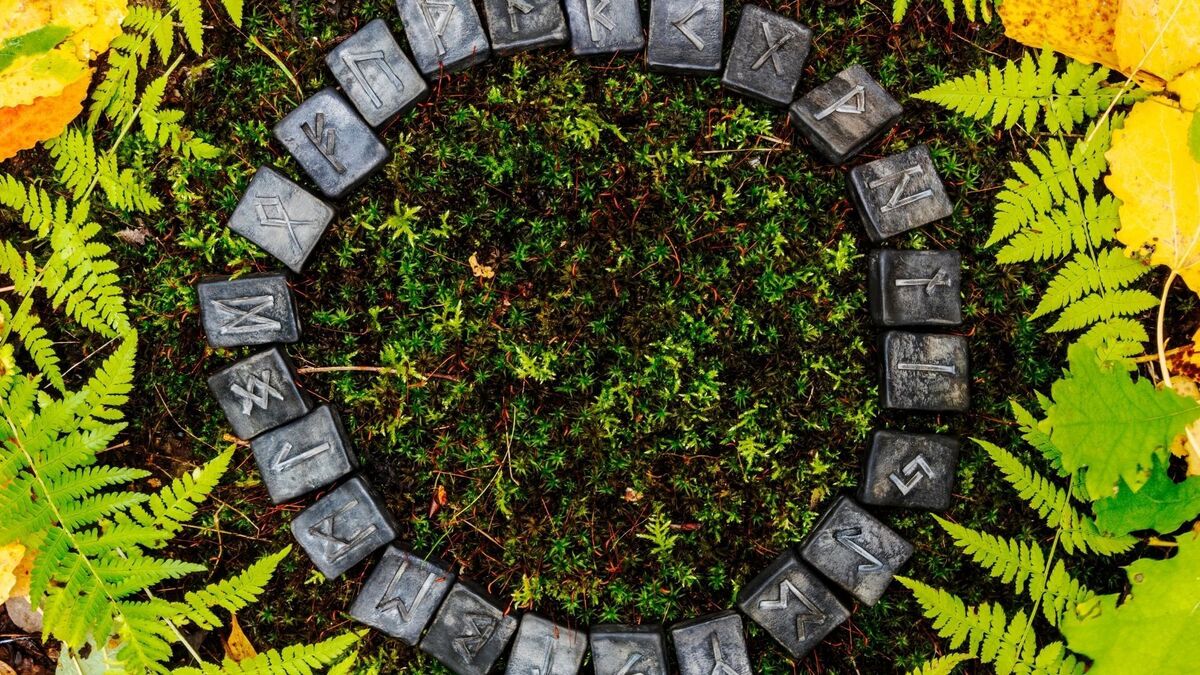
Yes: the Nordic runes are an extremely reliable source of connection to the divine. This is because when the Master of Runes, Odin, hung himself from the tree of life, Yggdrasil, He allowed His teachings to dispel the ignorance of this world, using this sacred code to unravel the veils of time and space.
With the runes, the Father of All had access to representations of sounds and concepts, which, when aligned with the images inscribed in each rune, work as keys that give access to the 9 realms in which the Universe is divided in Yggdrasil.
Therefore, by using the runes, you can access the secret of each of these realms, connecting with the sacred essence within you and establishing bridges, like a true Bifröst, which will act as links between you and the divine.

